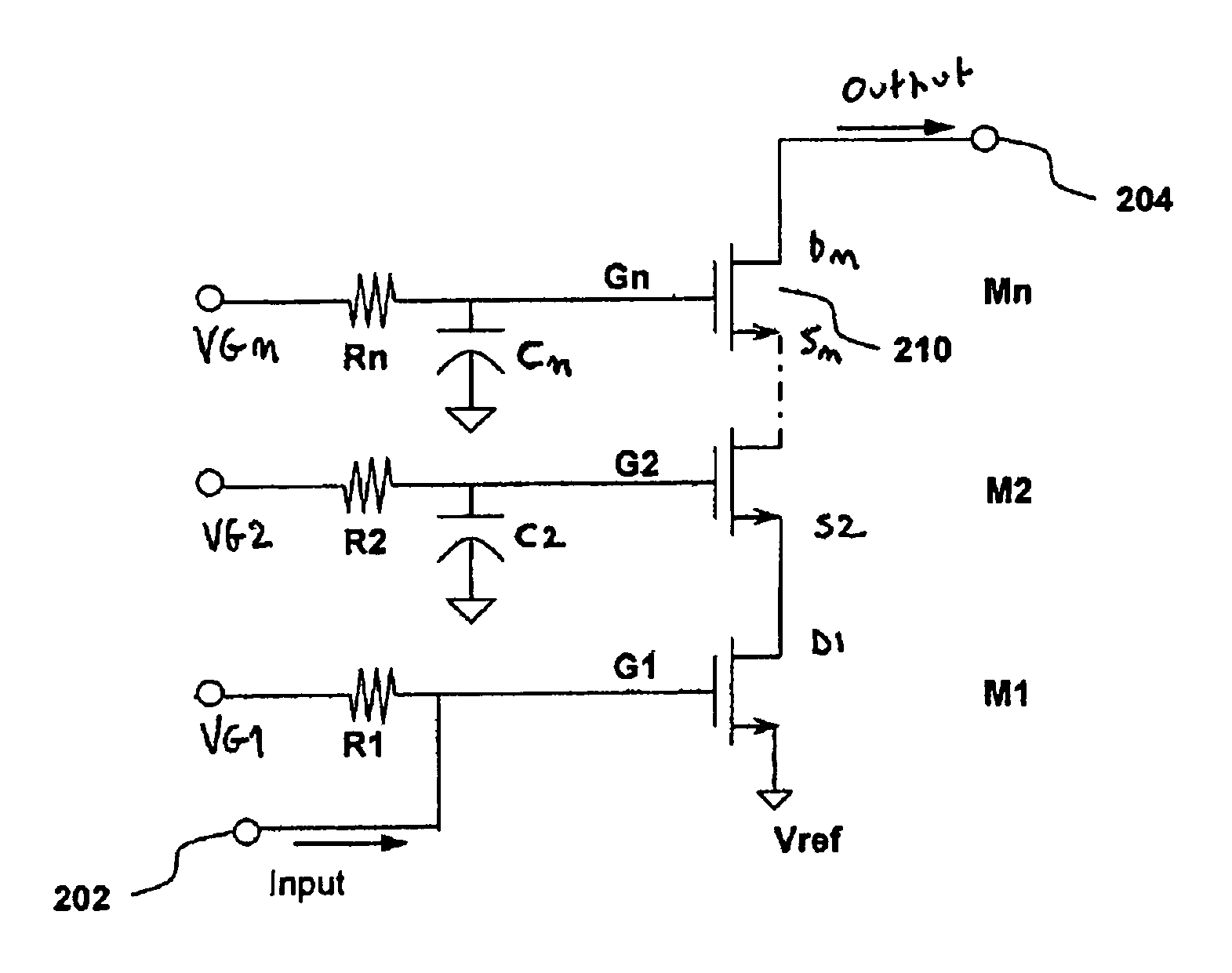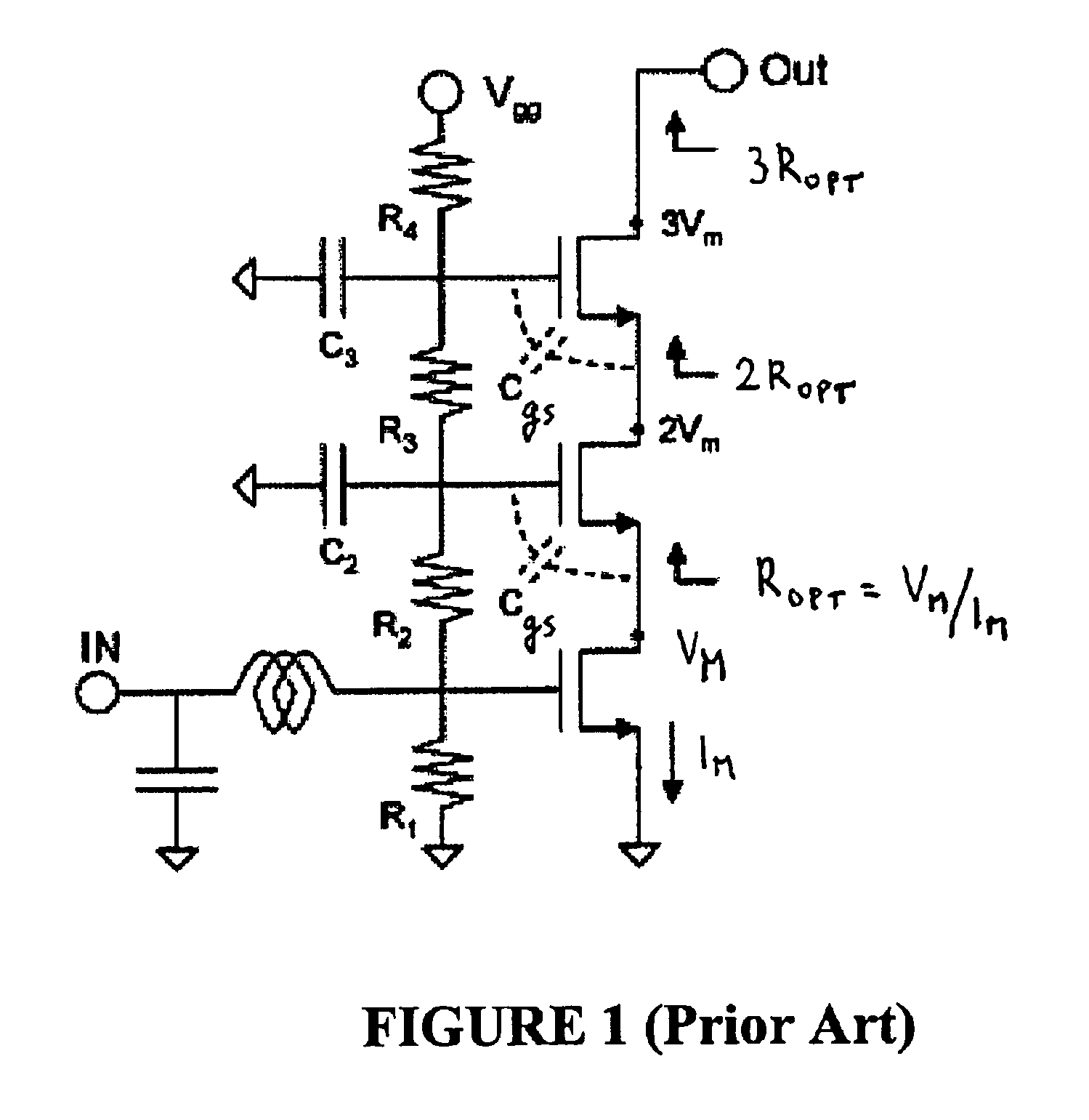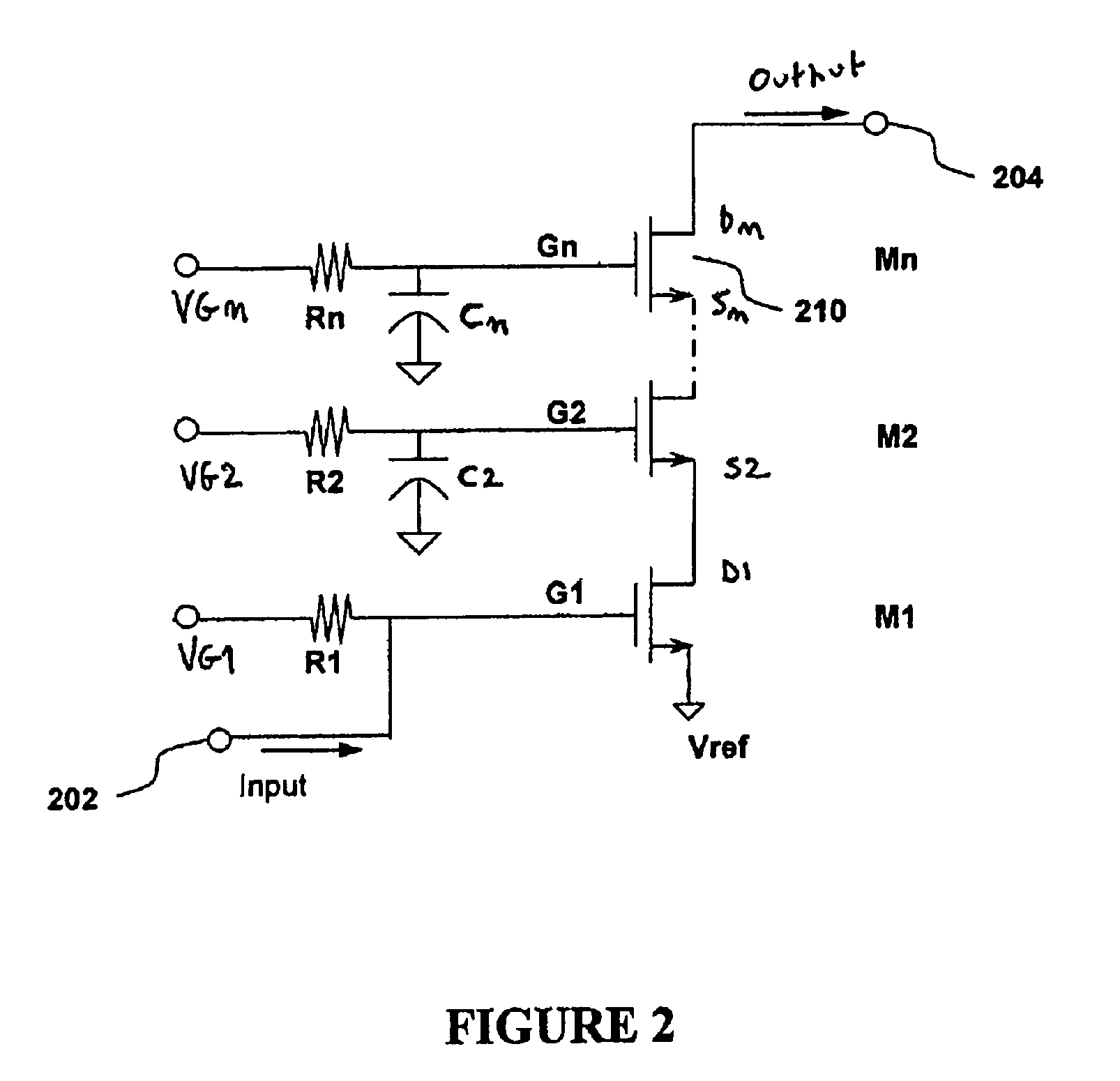Stacked linear power amplifier with capacitor feedback and resistor isolation
a technology of capacitor feedback and resistor isolation, which is applied in the direction of amplifiers, amplifiers with semiconductor devices only, amplifiers with semiconductor devices, etc., can solve the problems of inacceptable linearity of amplifiers in many modern communication standards, and achieve the effects of minimizing non-linearity generation, minimizing distortion, and maximizing
- Summary
- Abstract
- Description
- Claims
- Application Information
AI Technical Summary
Benefits of technology
Problems solved by technology
Method used
Image
Examples
first embodiment
[0025]According to the present teachings, a serially-connected PA is provided, comprising several transistors stacked one above the other, forming an input stage and one or more additional stages stacked above the input stage, wherein: 1) the input voltage bias of the input stage and the one or more additional stages; and 2) the external gate capacitances of the one or more additional stages are configured to reduce distortion among stages. According to this embodiment, configuration of the input voltage bias of the input stage and additional stages allows minimization of the generation of non-linearities from each device. On the other hand, configuration of the external gate capacitances of the one or more additional stages allows phase alignment between devices to maximize cancellation of distortion between such devices. By way of example and not of limitation, reduction of distortion among stages can be performed by minimizing intermodulation distortion (IMD) of the PA In particu...
case 1
[0087) This is a scenario wherein the input power is small so that the product between
[0088]50vgs1123
and the fifth order coefficients is far smaller than the third order coefficients:
[0089]Hence, the equations (18) and (19) set forth above become:
[0090]RA1+pgm12gm11RA2=0(Eq.21)IA1+pgm12gm11IA2=0(Eq.22)
[0091]In this scenario, even without the second column, it is also possible to tune the bias points VG11, VG21 in order to obtain the desired result of RA1=0, IA1=0. However, this is a problem of three unknowns for three independent equations. The optimal bias points should be one or few discrete points. In a real power amplifier, process, voltage and temperature (PVT) variation will get the bias away from optimal points. PVT sensing and bias adjustment can improve such disadvantage, but are limited by sensing sensitivity and accuracy.
[0092]On the other hand, if the parallel array of FIG. 6 is used, there are six unknowns to meet four independent equations (20)...
case 2
[0093) This is a scenario wherein the input power has a value such that the product of
[0094]50vgs1123
with the fifth order coefficients is negligible with respect to the third order coefficients.
[0095]To minimize the IM3R, equations (18) and (19) become:
[0096]RB1+pgm12gm11RB2=0(Eq.23)IB1+pgm12gm11IB2=0(Eq.24)RA1+pgm12gm11RA2=0(Eq.25)IA1+pgm12gm11IA2=0(Eq.26)
[0097]In this scenario, there are six unknowns to meet six independent equations (20), (23), (24), (25) and (26). The parallel array of FIG. 6 can cancel distortion totally, but the bias may be sensitive to PVT variations. As described above with reference to case 1, PVT sensing and bias adjustment can provide improvement, but as described above, are limited by sensing sensitivity and accuracy.
[0098]If there is only one column, it would be impossible in this second case to cancel distortion over the entire input level.
PUM
 Login to View More
Login to View More Abstract
Description
Claims
Application Information
 Login to View More
Login to View More - R&D
- Intellectual Property
- Life Sciences
- Materials
- Tech Scout
- Unparalleled Data Quality
- Higher Quality Content
- 60% Fewer Hallucinations
Browse by: Latest US Patents, China's latest patents, Technical Efficacy Thesaurus, Application Domain, Technology Topic, Popular Technical Reports.
© 2025 PatSnap. All rights reserved.Legal|Privacy policy|Modern Slavery Act Transparency Statement|Sitemap|About US| Contact US: help@patsnap.com



